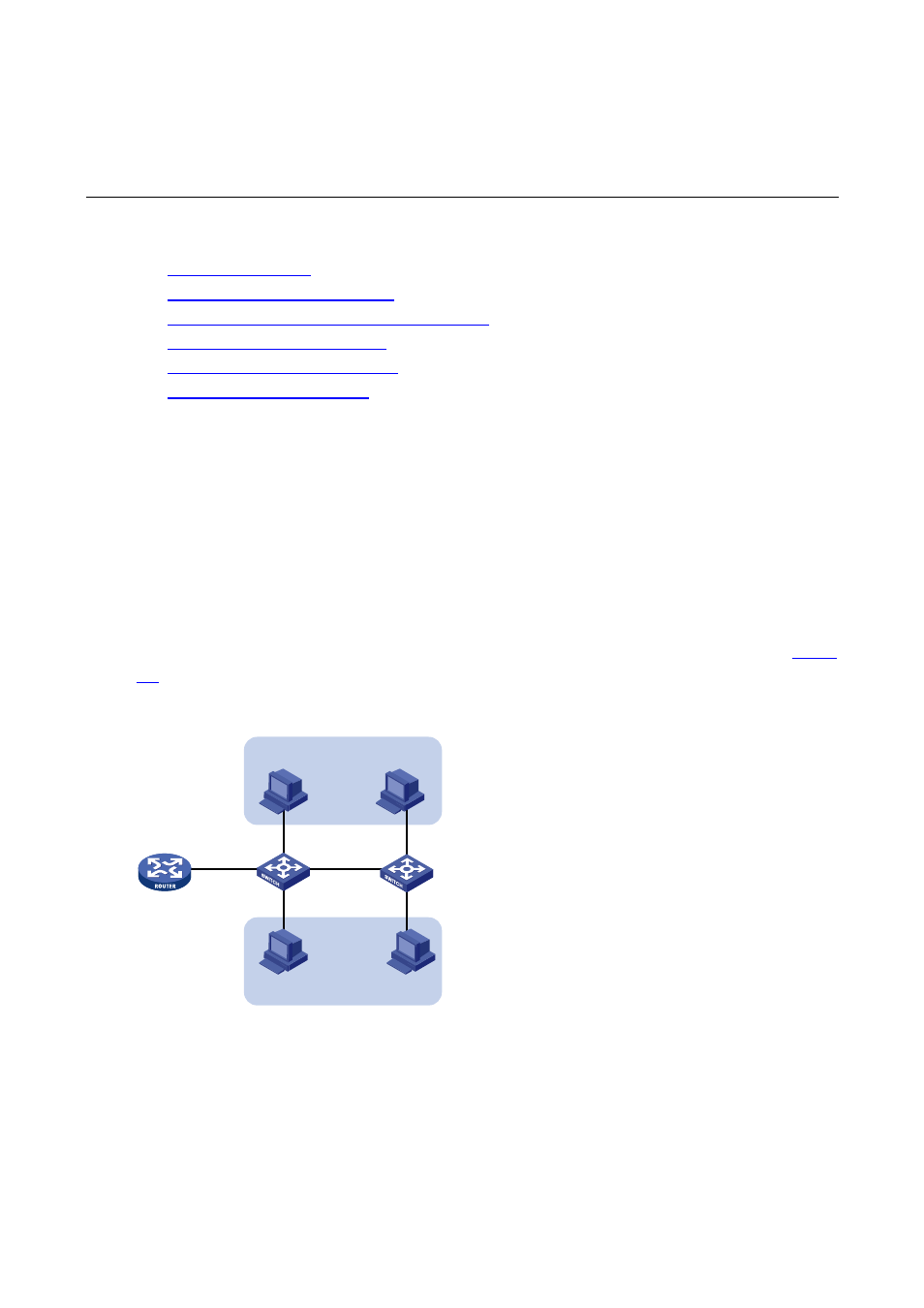1 vlan configuration, Introduction to vlan, Vlan overview – H3C Technologies H3C S5120 Series Switches User Manual
Page 143: Vlan configuration

1-1
1
VLAN Configuration
When configuring VLAN, go to these sections for information you are interested in:
z
z
Configuring Basic VLAN Settings
z
Configuring Basic Settings of a VLAN Interface
z
z
Displaying and Maintaining VLAN
z
Introduction to VLAN
VLAN Overview
Ethernet is a network technology based on the Carrier Sense Multiple Access/Collision Detect
(CSMA/CD) mechanism. As the medium is shared, collisions and excessive broadcasts cannot be
avoided on an Ethernet. To address the issue, virtual LAN (VLAN) was introduced.
The idea is to break a LAN down into separate VLANs, that is, Layer 2 broadcast domains whereby
frames are switched between ports assigned to the same VLAN. VLANs are isolated from each other at
Layer 2. A VLAN is a bridging domain, and all broadcast traffic is contained within it, as shown in
.
Figure 1-1 A VLAN diagram
VLAN 2
VLAN 5
Switch B
Switch A
Router
A VLAN is logically divided on an organizational basis rather than on a physical basis. For example, all
workstations and servers used by a particular workgroup can be connected to the same LAN,
regardless of their physical locations.
VLAN technology delivers the following benefits:
1) Confining broadcast traffic within individual VLANs. This reduces bandwidth waste and improves
network performance.